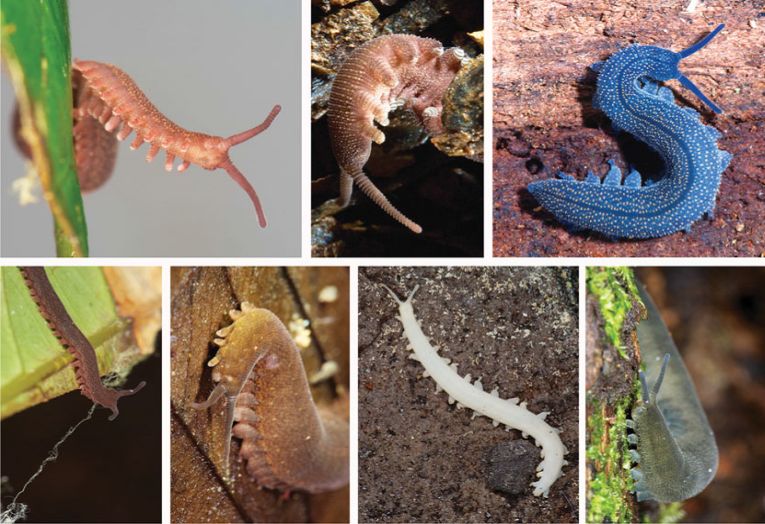The supercontinent reigned supreme for millions of years while life evolved. Early forms on land that are still with us should have had time to diverge and spread around the land mass. The only candidate for pre-insect life is probably the velvet “worm”, Peripatus and its relatives, that has many foot like appendages that convey it along in a millipede-like way.
This paper admirably took all the species known from almost every continent and large island and explored the genome carefully. The success of the research is that it indicates regional evolution taking place in Pangaea long before the geographic isolation of the continental masses. The alternative, that speciation among the Peripatus took place always after continental split, is disproved.
The early continent of Gondwana was hypothesised as the home of velvet worms, as the tropical climate suits them. Fossils themselves tend to indicate a more general distribution throughout Pangaean territory. Amber from the Baltic and Dominica holds the Peripatus intact and North American and French carboniferous fossils date them even further back.
One split between groups took place in the Late Palaeozoic, when SE Asian species separated, according to the genetic evidence. Europe and North America have lost their species after the climate of the Northern hemisphere became cold.
An interesting phylogenetic relationship between Neotropical and West African species lasted until the Triassic. Possible confirmation of the date of the African/American break-up is in their genes, confirmed by a similar harvestman (and other Arachnid) phylogeny.
Jerome Murienne, Savel R. Daniels, Thomas R. Buckley, Georg Mayer and Gonzalo Giribet of the Universities of Harvard, Toulouse, Stellenbosch, Auckland and Leipzig respectively present their paper in the Proceedings of the Royal Society B.










